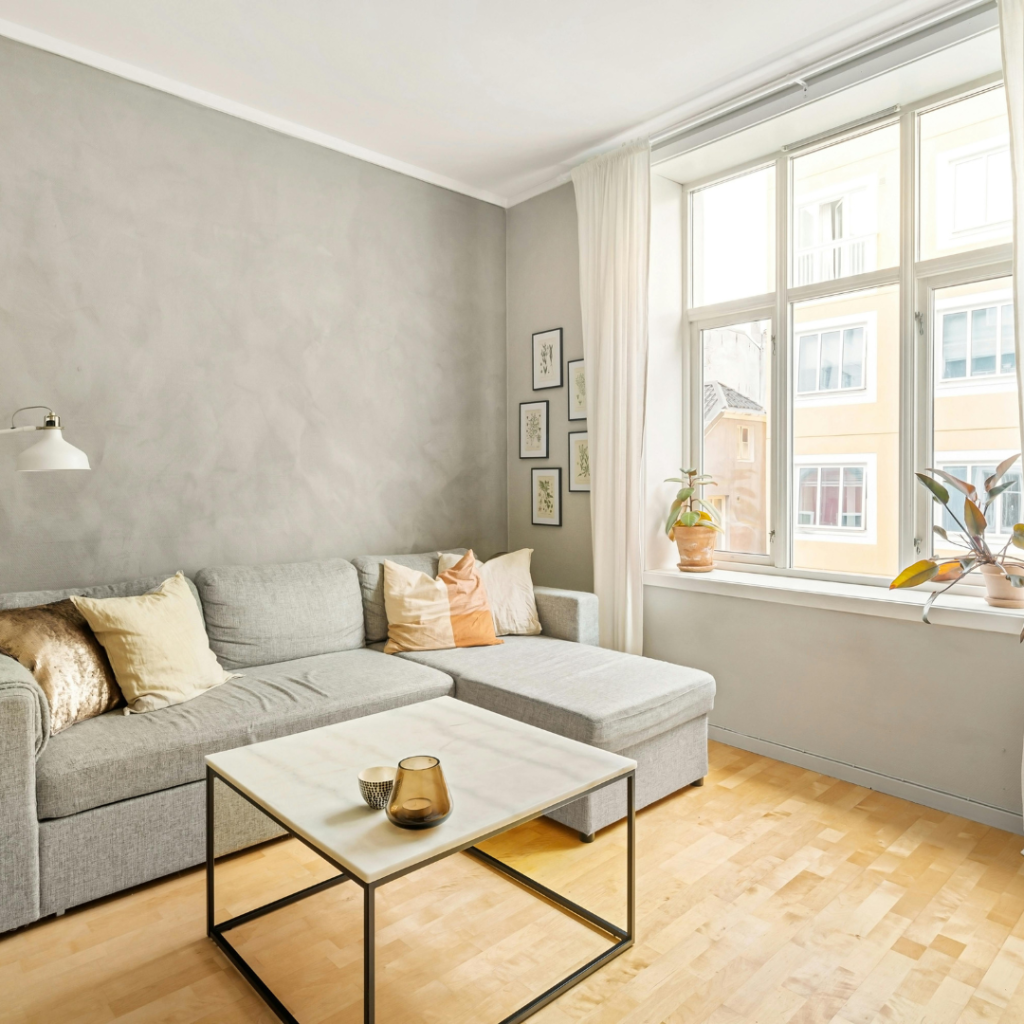A clean home is essential for a healthy lifestyle, reducing the presence of bacteria and germs that can lead to illness. Establishing a consistent cleaning routine can significantly improve both the appearance and hygiene of a living space. By incorporating simple cleaning tips into daily habits, maintaining cleanliness becomes manageable and less time-consuming.
Regular cleaning prevents the buildup of dust and grime, which not only affects aesthetics but can also impact indoor air quality. With a few strategic practices, one can create an environment that minimizes allergens and promotes well-being. Emphasizing everyday tasks can transform cleaning from a chore into a seamless part of life.
Creating an organized plan allows individuals to tackle cleaning efficiently. This can involve dedicating specific days for tasks or setting reminders for daily upkeep. Ultimately, a proactive approach ensures that one’s home remains a sanctuary free from germs and clutter.
Establishing a Cleaning Routine
Creating a consistent cleaning routine helps maintain a clean and organized home. Breaking tasks into daily, weekly, and monthly categories makes it easier to manage and ensures that no area is overlooked.
Daily Tasks for a Fresh Home
Daily tasks ensure that the home remains tidy and comfortable. A few essential activities include:
- Pick up Clutter: Spend 10 minutes each day decluttering living spaces, especially the kitchen and living room. This prevents mess from accumulating.
- Wipe Down Surfaces: Use an all-purpose cleaner to quickly wipe kitchen counters and dining tables to remove crumbs and spills.
- Daily Vacuuming or Sweeping: Focus on high-traffic areas. Using a broom or vacuum prevents dirt buildup.
- Sanitize High-Touch Areas: Disinfect frequently used items like doorknobs, light switches, and remote controls to maintain hygiene.
Incorporating these tasks into a daily checklist can keep homes organized with minimal effort.
Weekly Home Maintenance
Weekly maintenance tasks are essential for deeper cleanliness. They include:
- Dusting Surfaces: Use a duster or microfiber cloth to remove dust from shelves, light fixtures, and baseboards.
- Vacuuming and Mopping: Dedicate time to vacuuming carpets and rugs thoroughly. For hard floors, mopping with an appropriate cleaner maintains their appearance.
- Bathroom Cleaning: Focus on the toilet, sink, and shower. Utilize disinfectants to scrub these areas effectively. Replace towels and check for any supplies needed.
- Change Bedding: Replace sheets and pillowcases weekly. This promotes a healthy sleeping environment.
Creating a weekly cleaning schedule helps ensure that each task is accounted for.
Monthly Deep Cleaning
Monthly deep cleaning focuses on areas often neglected during weekly tasks. Key activities include:
- Decluttering Each Room: Take time to sort through belongings, removing items no longer needed. This promotes a more organized space.
- Cleaning Appliances: Remove dust and grime from kitchen appliances such as the refrigerator and oven. Use specialized cleaners where necessary.
- Window and Curtain Cleaning: Wash windows inside and out. Check and clean curtains or blinds to improve light quality and aesthetics.
- Check Supplies: Ensure that cleaning supplies are replenished. This way, all cleaning tasks can be carried out effectively.
Monthly routines directly contribute to a cleaner, more inviting home.
The Art of Disinfection and Decluttering
Maintaining a clean home involves effective disinfection practices and strategic decluttering. By targeting high-touch surfaces and reducing clutter, individuals can foster a healthier living environment.
Targeting High-Touch Surfaces
High-touch surfaces are areas that are frequently in contact with hands, making them prime locations for bacteria accumulation. Key areas to focus on include doorknobs, light switches, remote controls, and countertops. A regular cleaning routine should include disinfecting these surfaces to minimize the risk of cross-contamination.
Use disinfectants that are effective against a range of pathogens. For instance, a solution containing bleach can effectively eliminate germs. When using any disinfectant, follow the manufacturer’s instructions regarding contact time to ensure efficacy.
It is advisable to utilize microfiber cloths for wiping surfaces, as they trap dirt and bacteria more effectively than traditional cloths. Starting the cleaning process from the top to bottom can help prevent dirt from recontaminating areas that have already been cleaned.
Reducing Clutter for Better Hygiene
Decluttering not only creates a more organized environment but also enhances hygiene. Excess clutter can trap dust, allergens, and microbes, which can adversely affect health.
Begin the decluttering process by identifying items that are no longer needed. This might include old papers, unused kitchen gadgets, and clothes that haven’t been worn in a year. Creating designated storage spaces can help maintain organization.
Once decluttering is complete, routine cleaning becomes simpler and more efficient. Regularly vacuum or sweep the floors and wipe down surfaces to keep the home hygienic. Implementing these cleaning tips will support ongoing disinfection efforts and contribute to a healthier living space.
Special Focus on Kitchen and Bathroom
Maintaining cleanliness in the kitchen and bathroom is essential for a healthy home. Regular cleaning and the right techniques can effectively manage germs and maintain surfaces in top condition.
Keeping Your Kitchen Spotless
A spotless kitchen requires consistent attention to high-use areas. Wiping down countertops daily with an all-purpose cleaner helps eliminate bacteria. Focus on kitchen appliances as well, including the fridge and coffee maker.
Cleaning cutting boards is crucial; they can harbor harmful pathogens. Use a solution of vinegar and water for sanitizing. Sponges should be replaced regularly to prevent mold growth. After washing dishes, run the dishwasher with a cleaning cycle once a month to maintain it. Regularly mopping the floor can also reduce dust and food particles.
Bathroom Cleaning Techniques
Bathrooms require diligent cleaning to prevent the buildup of mold and dust mites. Start with surfaces like countertops, sinks, and mirrors using a window cleaner or dedicated bathroom cleaner.
Toilets need special attention; a toilet brush and cleaner should be used at least once a week. Consider using a squeegee after showers to minimize water spots on glass doors.
For tile and grout, a mix of water and vinegar can help lift stains. Regular vacuuming or mopping the bathroom floor keeps it free of hair and dust. Pay attention to ventilation to reduce humidity and prevent mold growth.
Taking Care of Textiles and Appliances
Maintaining textiles and appliances is crucial for a clean and comfortable home. Regular care can prevent dust accumulation, prolong lifespan, and ensure a hygienic living environment.
Fabric Care: From Bedding to Curtains
Textiles require attention to maintain their condition and cleanliness. Bedding, including sheets and pillowcases, should be washed weekly in hot water to eliminate dust mites and allergens. An all-purpose cleaner works well on soft surfaces like curtains, which should be vacuumed monthly to remove pet hair and dust.
Dust should also be wiped off surfaces, especially in closets where fabric items are stored. For curtains, a gentle fabric-safe cleaner can be used during seasonal changes. Always check labels to avoid damage. Mold can develop in damp areas, so ensuring textiles dry completely is vital.
Appliances: Maintenance for Longevity
Regular maintenance of appliances helps them function efficiently. For dishwashers, monthly cleaning with an appropriate cleaner can prevent the buildup of food particles and grease.
Vacuums should be emptied and filters changed regularly to maintain suction power. Ceiling fans collect dust; using a damp cloth to wipe them down every few weeks keeps them clean.
For washers, running an empty cycle with vinegar can prevent mold and odors. The grill should be cleaned after every use to avoid food residue buildup. Prioritize consistent upkeep to extend appliance lifespan and maintain an orderly home.

